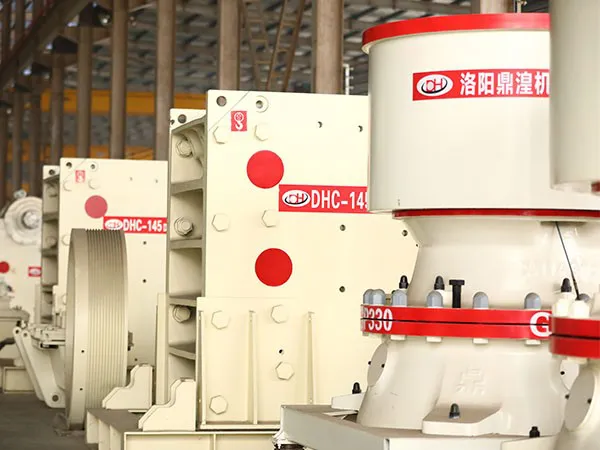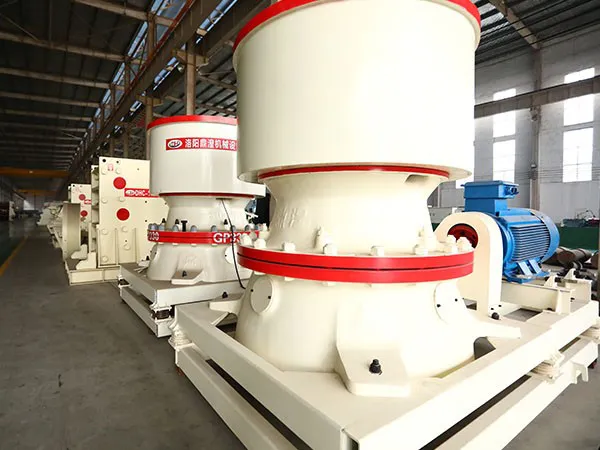While both jaw crushers and cone crushers are essential in aggregate and mining operations, they are typically used at different stages and have distinct advantages. Cone crushers generally offer advantages over jaw crushers when used in secondary, tertiary, or quaternary crushing stages, after a primary jaw crusher has already done the initial size reduction.

Cone Crusher: Produces a more cubical (equi-dimensional) product. This is due to the combination of compression and attrition as material is crushed between the mantle and bowl liner, and also due to inter-particle crushing when choke-fed. Cubical aggregate is preferred for concrete and asphalt as it provides better strength and workability.
Jaw Crusher: Tends to produce more elongated or flaky particles, especially with laminated or slabby feed rock.
Cone Crusher: Can achieve a finer product size and a tighter particle size distribution. They are designed for producing precisely graded materials.
Jaw Crusher: Primarily designed for coarse primary crushing, so its product is larger and less uniform.
Cone Crusher: For a given physical size (in secondary/tertiary applications), a cone crusher often has a higher throughput capacity than a jaw crusher would if it were forced to produce a similarly sized product. The continuous crushing action contributes to this.
Jaw Crusher: Operates with an intermittent crushing action (once per revolution).

Cone Crusher: Can achieve higher reduction ratios (e.g., 6:1 to 10:1 or even higher in some modern designs) efficiently when processing pre-crushed material.
Jaw Crusher: Typically offers reduction ratios of 3:1 to 5:1 for primary crushing.
Cone Crusher: Many modern cone crushers are designed to operate effectively when "choke-fed" (the crushing chamber is kept full). This promotes inter-particle crushing, improves cubicity, and can optimize wear part life.
Jaw Crusher: Generally not ideal for continuous choke feeding; it can lead to packing and excessive stress.
Cone Crusher: Modern cone crushers often incorporate sophisticated hydraulic systems for setting adjustment (Closed Side Setting - CSS), tramp iron release, and clearing. This allows for easier on-the-fly adjustments and better process control.
Jaw Crusher: While some have hydraulic adjustment, they are generally simpler machines with less complex control systems.

Cone Crusher: Usually equipped with robust hydraulic tramp release systems that allow the crusher setting to open temporarily to pass uncrushable material (like tramp metal) and then automatically return to the original setting.
Jaw Crusher: May have a toggle plate designed to break to protect the crusher, but this results in downtime for replacement.
Cone Crusher: The gyrating motion and the ability to rotate the bowl (in some designs) can lead to more even wear on the mantle and bowl liner, potentially extending wear part life and maintaining consistent product gradation for longer.
Jaw Crusher: Wear tends to concentrate on specific areas of the jaw plates.
It's crucial to remember that they are not directly interchangeable for all applications.
Jaw crushers excel as primary crushers, handling very large, hard, and abrasive feed materials directly from a quarry.
Cone crushers excel in secondary and subsequent stages, taking the pre-crushed material from a jaw (or impact) crusher and refining it further.
So, the advantages of a cone crusher are most apparent when it's used in its intended role within a multi-stage crushing circuit.
Advanced Eco-Friendly Impact Crushers: Optimizing Industrial Efficiency and Sustainability
2025-11-24 02:27Impact Crusher vs Jaw Crusher: Key Differences, Applications & Efficiency Guide
2025-11-19 03:12Impact Crusher Maintenance Guide: Tips to Maximize Efficiency and Extend Lifespan
2025-11-15 05:38Impact Crusher Wear Parts Replacement: Boost Performance, Extend Lifespan, and Minimize Downtime
2025-11-08 16:16Address: Luoyang Luoxin Industrial Park, Henan,China
E-mail: sales@yd-crusher.com
Phone: 86-139-3993-0123

Yude
Mechanical
Create the greatest value for customers
Provide the best quality products and services
86-139-3993-0123
sales@yd-crusher.com
Luoyang Luoxin Industrial Park, Henan,China